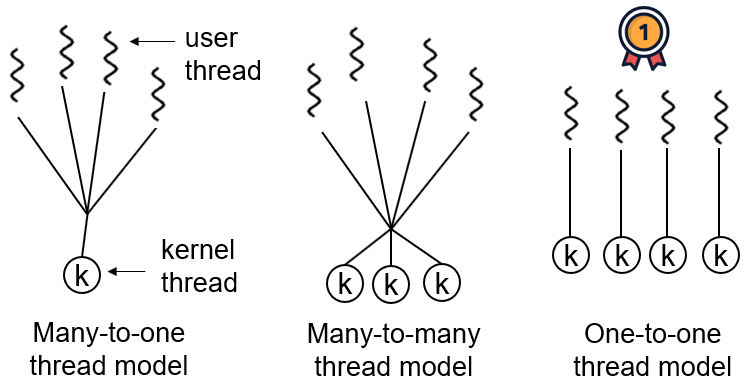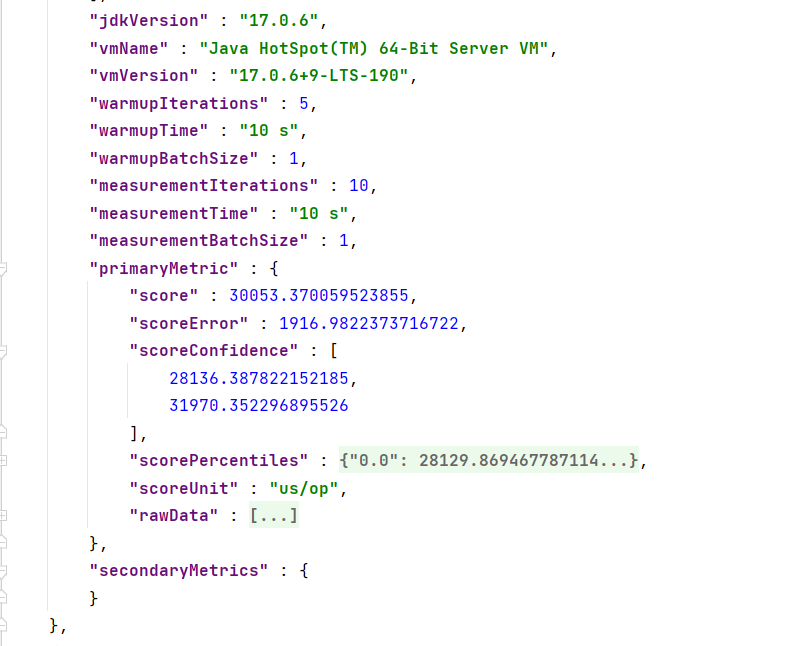第一节 MVC
# 1、提出问 题
我们对HTML的新的期待:既能够正常显示页面,又能在页面中包含动态数据部分。而动态数据单靠HTML本身是无法做到的,所以此时我们需要引入服务器端动态视图模板技术。
# 2、从三层结构到MVC# ①MVC概念M:Model模型
V:View视图
C:Controller控制器
MVC是在表述层开发中运用的一种设计理念。主张把封装数据的『模型』 、显示用户界面的『视图』 、**协调调度的『控制器』**分开。
好处:
进一步实现各个组件之间的解耦
让各个组件可以单独维护
将视图分离出来以后,我们后端工程师和前端工程师的对接更方便
# ②MVC和三层架构之间关系
# 3、前后端工程师对接方式
服务器端渲染:前端工程师把前端页面一整套做好交给后端工程师
前后端分离:开会商量JSON格式,然后分头开发。在后端程序尚不可用时,前端工程师会使用Mock.js生成假数据使用,在后端程序可用后再连接实际后端程序获取真实数据。
查看详细内容(opens new window)
第二节 Thymeleaf简介
# 1、Thymeleaf的同行JSP、Freemarker、Velocity等等,它们有一个共同的名字:服务器端模板技术 。
# 2、Thymeleaf官方文档中的介绍官网地址(opens new window)
官方文档
Thymeleaf is a modern server-side Java template engine for both web and standalone environments, capable of processing HTML, XML, JavaScript, CSS and even plain text. The main goal of Thymeleaf is to provide an elegant and highly-maintainable way of creating templates. To achieve this, it builds on the concept of Natural Templates to inject its logic into template files in a way that doesn’t affect the template from being used as a design prototype. This improves communication of design and bridges the gap between design and development teams. Thymeleaf has also been designed from the beginning with Web Standards in mind – especially HTML5 – allowing you to create fully validating templates if that is a need for you.
# 3、Thymeleaf优势
SpringBoot官方推荐使用的视图模板技术,和SpringBoot完美整合。
不经过服务器运算仍然可以直接查看原始值,对前端工程师更友好。
1 2 3 4 5 6 7 8 9 10 11 12 <!DOCTYPE html > <html lang ="en" xmlns:th ="http://www.thymeleaf.org" > <head > <meta charset ="UTF-8" > <title > Title</title > </head > <body > <p th:text ="${hello}" > default Value</p > </body > </html >
# 4、物理视图和逻辑视图# ①物理视图在Servlet中,将请求转发到一个HTML页面文件时,使用的完整的转发路径就是物理视图 。
/pages/user/login_success.html
如果我们把所有的HTML页面都放在某个统一的目录下,那么转发地址就会呈现出明显的规律:
/pages/user/login.html /pages/user/login_success.html /pages/user/regist.html /pages/user/regist_success.html
……
路径的开头都是:/pages/user/
路径的结尾都是:.html
所以,路径开头的部分我们称之为视图前缀 ,路径结尾的部分我们称之为视图后缀 。
# ②逻辑视图物理视图=视图前缀+逻辑视图+视图后缀
上面的例子中:
视图前缀
逻辑视图
视图后缀
物理视图
/pages/user/
login
.html
/pages/user/login.html
/pages/user/
login_success
.html
/pages/user/login_success.html
第三节 在服务器端引入Thymeleaf环境
# 1、加入jar包
# 2、配置上下文参数
物理视图=视图前缀+逻辑视图+视图后缀
1 2 3 4 5 6 7 8 9 <context-param > <param-name > view-prefix</param-name > <param-value > /WEB-INF/view/</param-value > </context-param > <context-param > <param-name > view-suffix</param-name > <param-value > .html</param-value > </context-param >
说明:param-value中设置的前缀、后缀的值不是必须叫这个名字,可以根据实际情况和需求进行修改。
为什么要放在WEB-INF目录下?
原因:WEB-INF目录不允许浏览器直接访问,所以我们的视图模板文件放在这个目录下,是一种保护。以免外界可以随意访问视图模板文件。
访问WEB-INF目录下的页面,都必须通过Servlet转发过来,简单说就是:不经过Servlet访问不了。
这样就方便我们在Servlet中检查当前用户是否有权限访问。
那放在WEB-INF目录下之后,重定向进不去怎么办?
重定向到Servlet,再通过Servlet转发到WEB-INF下。
# 3、创建Servlet基类这个类大家直接复制粘贴 即可,将来使用框架后,这些代码都将被取代。
1 2 3 4 5 6 7 8 9 10 11 12 13 14 15 16 17 18 19 20 21 22 23 24 25 26 27 28 29 30 31 32 33 34 35 36 37 38 39 40 41 42 43 44 45 46 47 48 49 50 51 52 53 54 55 56 57 58 59 60 61 62 63 64 65 66 67 import org.thymeleaf.TemplateEngine;import org.thymeleaf.context.WebContext;import org.thymeleaf.templatemode.TemplateMode;import org.thymeleaf.templateresolver.ServletContextTemplateResolver;import javax.servlet.ServletContext;import javax.servlet.ServletException;import javax.servlet.http.HttpServlet;import javax.servlet.http.HttpServletRequest;import javax.servlet.http.HttpServletResponse;import java.io.IOException;public class ViewBaseServlet extends HttpServlet { private TemplateEngine templateEngine; @Override public void init () throws ServletException { ServletContext servletContext = this .getServletContext(); ServletContextTemplateResolver templateResolver = new ServletContextTemplateResolver (servletContext); templateResolver.setTemplateMode(TemplateMode.HTML); String viewPrefix = servletContext.getInitParameter("view-prefix" ); templateResolver.setPrefix(viewPrefix); String viewSuffix = servletContext.getInitParameter("view-suffix" ); templateResolver.setSuffix(viewSuffix); templateResolver.setCacheTTLMs(60000L ); templateResolver.setCacheable(true ); templateResolver.setCharacterEncoding("utf-8" ); templateEngine = new TemplateEngine (); templateEngine.setTemplateResolver(templateResolver); } protected void processTemplate (String templateName, HttpServletRequest req, HttpServletResponse resp) throws IOException { resp.setContentType("text/html;charset=UTF-8" ); WebContext webContext = new WebContext (req, resp, getServletContext()); templateEngine.process(templateName, webContext, resp.getWriter()); } }
# 4、HelloWorld# ①创建index.html
# ②在index.html编写超链接1 <a href ="/view/TestThymeleafServlet" > 初步测试Thymeleaf</a >
1
# ③创建Servlet
1 2 3 4 5 6 7 8 <servlet > <servlet-name > TestThymeleafServlet</servlet-name > <servlet-class > com.atguigu.thymeleaf.servlet.TestThymeleafServlet</servlet-class > </servlet > <servlet-mapping > <servlet-name > TestThymeleafServlet</servlet-name > <url-pattern > /TestThymeleafServlet</url-pattern > </servlet-mapping >
# ④修改Servlet继承的父类
# ⑤在doGet()方法中跳转到Thymeleaf页面1 2 3 4 5 6 7 8 9 protected void doGet (HttpServletRequest request, HttpServletResponse response) throws ServletException, IOException { String viewName = "target" ; super .processTemplate(viewName, request, response); }
# ⑥Thymeleaf页面1 2 3 4 5 6 7 8 9 10 11 12 13 14 15 <!DOCTYPE html > <html lang ="en" xmlns:th ="http://www.thymeleaf.org" > <head > <meta charset ="UTF-8" > <title > Title</title > </head > <body > <p th:text ="@{'/aaa/bbb/ccc'}" > Thymeleaf将在这里显示一个解析出来的URL地址</p > </body > </html >
第五节 基本语法:表达式语法
# 1、修改标签文本值代码示例:
1 <p th:text ="标签体新值" > 标签体原始值</p >
# ①th:text作用
不经过服务器解析,直接用浏览器打开HTML文件,看到的是『标签体原始值』
经过服务器解析,Thymeleaf引擎根据th:text属性指定的『标签体新值』去替换 『标签体原始值』
# ②字面量『字面量』是一个经常会遇到的概念,我们可以对照『变量』来理解它的含义。
1 2 3 int a = 100 ;System.out.println("a = " + a);
变量:变量名字符串本身不是它的值,它指向的才是它的值
字面量:它就是字面上的含义,我们从『字面』上看到的直接就是它的值
现在我们在th:text属性中使用的就是『字面量』,它不指代任何其他值 。
# 2、修改指定属性值代码示例:
1 <input type ="text" name ="username" th:value ="文本框新值" value ="文本框旧值" />
语法:任何HTML标签原有的属性,前面加上『th:』就都可以通过Thymeleaf来设定新值。
# 3、解析URL地址# ①基本语法代码示例:
1 <p th:text ="@{/aaa/bbb/ccc}" > 标签体原始值</p >
经过解析后得到:
/view/aaa/bbb/ccc
所以@{}的作用是在字符串前附加『上下文路径』
这个语法的好处是:实际开发过程中,项目在不同环境部署时,Web应用的名字有可能发生变化。所以上下文路径不能写死。而通过@{}动态获取上下文路径后,不管怎么变都不怕啦!
# ②首页使用URL地址解析
如果我们直接访问index.html本身,那么index.html是不需要通过Servlet,当然也不经过模板引擎,所以index.html上的Thymeleaf的任何表达式都不会被解析。
解决办法:通过Servlet访问index.html,这样就可以让模板引擎渲染页面了:
进一步的好处:
通过上面的例子我们看到,所有和业务功能相关的请求都能够确保它们通过Servlet来处理,这样就方便我们统一对这些请求进行特定规则的限定。
# ③给URL地址后面附加请求参数参照官方文档说明:
# 4、直接执行表达式Servlet代码:
1 request.setAttribute("reqAttrName" , "<span>hello-value</span>" );
页面代码:
1 2 <p > 有转义效果:[[${reqAttrName}]]</p > <p > 无转义效果:[(${reqAttrName})]</p >
执行效果:
1 2 <p > 有转义效果:< span> hello-value< /span> </p > <p > 无转义效果:<span > hello-value</span > </p >
第六节 基本语法:访问域对象
# 1、域对象# ①请求域在请求转发的场景下,我们可以借助HttpServletRequest对象内部给我们提供的存储空间,帮助我们携带数据,把数据发送给转发的目标资源。
请求域:HttpServletRequest对象内部给我们提供的存储空间
# ②会话域
# ③应用域
PS:在我们使用的视图是JSP的时候,域对象有4个
pageContext
request:请求域
session:会话域
application:应用域
所以在JSP的使用背景下,我们可以说域对象有4个,现在使用Thymeleaf了,没有pageContext。
# 2、在Servlet中将数据存入属性域# ①操作请求域Servlet中代码:
1 2 3 4 String requestAttrName = "helloRequestAttr" ;String requestAttrValue = "helloRequestAttr-VALUE" ;request.setAttribute(requestAttrName, requestAttrValue);
Thymeleaf表达式:
1 <p th:text ="${helloRequestAttr}" > request field value</p >
⭐mine请求域
Servlet中代码:
1 2 3 4 5 6 7 8 9 10 11 @Override public void doGet (HttpServletRequest request , HttpServletResponse response) throws IOException, ServletException { String fidStr = request.getParameter("fid" ); if (StringUtil.isNotEmpty(fidStr)){ int fid = Integer.parseInt(fidStr); Fruit fruit_request = fruitDAO.getFruitByFid(fid); request.setAttribute("fruit_req" ,fruit_request); super .processTemplate("edit" ,request,response); } }
Thymeleaf表达式:
1 2 3 4 5 6 7 8 9 10 11 12 13 14 15 16 17 18 19 20 21 22 23 24 25 26 27 28 29 30 31 32 33 34 35 36 37 38 39 40 41 42 43 44 45 46 47 48 49 50 51 52 53 <!DOCTYPE html > <html lang ="en" xmlns:th ="http://www.thymeleaf.org" > <head > <meta charset ="utf-8" > <link rel ="stylesheet" href ="css/edit.css" > </head > <body > <div id ="div_container" > <div id ="div_fruit_list" th:object ="${#request.getAttribute('fruit_req')}" > <form th:action ="@{/update.do}" method ="post" > <input type ="hidden" name ="fid" th:value ="*{fid}" /> <table id ="tbl_fruit" > <tr > <th class ="w20" > 名称:</th > <td > <input type ="text" name ="fname" th:value ="*{fname}" /> </td > </tr > <tr > <th class ="w20" > 单价:</th > <td > <input type ="text" name ="price" th:value ="*{price}" /> </td > </tr > <tr > <th class ="w20" > 库存:</th > <td > <input type ="text" name ="fcount" th:value ="*{fcount}" /> </td > </tr > <tr > <th class ="w20" > 备注:</th > <td > <input type ="text" name ="remark" th:value ="*{remark}" /> </td > </tr > <tr > <th colspan ="2" > <input type ="submit" value ="修改" > </th > </tr > </table > </form > </div > </div > </body > </html >
# ②操作会话域Servlet中代码:
1 2 3 4 5 HttpSession session = request.getSession();session.setAttribute("helloSessionAttr" , "helloSessionAttr-VALUE" );
Thymeleaf表达式:
1 <p th:text ="${session.helloSessionAttr}" > 这里显示会话域数据</p >
# ③操作应用域Servlet中代码:
1 2 3 4 5 ServletContext servletContext = getServletContext();servletContext.setAttribute("helloAppAttr" , "helloAppAttr-VALUE" );
Thymeleaf表达式:
1 <p th:text ="${application.helloAppAttr}" > 这里显示应用域数据</p >
第七节 基本语法:获取请求参数
具体来说,我们这里探讨的是在页面上(模板页面)获取请求参数。底层机制是:
# 1、一个名字一个值页面代码:
1 <p th:text ="${param.username}" > 这里替换为请求参数的值</p >
页面显示效果:
# 2、一个名字多个值页面代码:
1 <p th:text ="${param.team}" > 这里替换为请求参数的值</p >
页面显示效果:
如果想要精确获取某一个值,可以使用数组下标。页面代码:
1 2 <p th:text ="${param.team[0]}" > 这里替换为请求参数的值</p > <p th:text ="${param.team[1]}" > 这里替换为请求参数的值</p >
页面显示效果:
第八节 基本语法:内置对象
# 1、概念所谓内置对象其实就是在表达式中可以直接使用 的对象。
# 2、基本内置对象
用法举例:
1 2 3 4 <h3 > 表达式的基本内置对象</h3 > <p th:text ="${#request.getClass().getName()}" > 这里显示#request对象的全类名</p > <p th:text ="${#request.getContextPath()}" > 调用#request对象的getContextPath()方法</p > <p th:text ="${#request.getAttribute('helloRequestAttr')}" > 调用#request对象的getAttribute()方法,读取属性域</p >
基本思路:
如果不清楚这个对象有哪些方法可以使用,那么就通过getClass().getName()获取全类名,再回到Java环境查看这个对象有哪些方法
内置对象的方法可以直接调用
调用方法时需要传参的也可以直接传入参数
# 3、公共内置对象
Servlet中将List集合数据存入请求域:
1 2 request.setAttribute("aNotEmptyList" , Arrays.asList("aaa" ,"bbb" ,"ccc" )); request.setAttribute("anEmptyList" , new ArrayList <>());
页面代码:
1 2 <p > #list对象isEmpty方法判断集合整体是否为空aNotEmptyList:<span th:text ="${#lists.isEmpty(aNotEmptyList)}" > 测试#lists</span > </p > <p > #list对象isEmpty方法判断集合整体是否为空anEmptyList:<span th:text ="${#lists.isEmpty(anEmptyList)}" > 测试#lists</span > </p >
公共内置对象对应的源码位置:
第九节 基本语法:${}中的表达式本质是OGNL
# 1、OGNLOGNL:Object-Graph Navigation Language对象-图 导航语言
# 2、对象图从根对象触发,通过特定的语法,逐层访问对象的各种属性。
# 3、OGNL语法# ①起点在Thymeleaf环境下,${}中的表达式可以从下列元素开始:
访问属性域的起点
请求域属性名
session
application
param
内置对象
#request
#session
#lists
#strings
# ②属性访问语法
访问对象属性:使用getXxx()、setXxx()方法定义的属性
访问List集合或数组
访问Map集合
第十节 基本语法:分支与迭代
# 1、分支# ①if和unless让标记了th:if、th:unless的标签根据条件决定是否显示。
示例的实体类:
1 2 3 4 public class Employee { private Integer empId; private String empName; private Double empSalary;
示例的Servlet代码:
1 2 3 4 5 6 7 8 9 10 11 12 13 14 15 protected void doGet (HttpServletRequest request, HttpServletResponse response) throws ServletException, IOException { List<Employee> employeeList = new ArrayList <>(); employeeList.add(new Employee (1 , "tom" , 500.00 )); employeeList.add(new Employee (2 , "jerry" , 600.00 )); employeeList.add(new Employee (3 , "harry" , 700.00 )); request.setAttribute("employeeList" , employeeList); super .processTemplate("list" , request, response); }
示例的HTML代码:
1 2 3 4 5 6 7 8 9 10 11 12 13 14 15 16 <table > <tr > <th > 员工编号</th > <th > 员工姓名</th > <th > 员工工资</th > </tr > <tr th:if ="${#lists.isEmpty(employeeList)}" > <td colspan ="3" > 抱歉!没有查询到你搜索的数据!</td > </tr > <tr th:if ="${not #lists.isEmpty(employeeList)}" > <td colspan ="3" > 有数据!</td > </tr > <tr th:unless ="${#lists.isEmpty(employeeList)}" > <td colspan ="3" > 有数据!</td > </tr > </table >
if配合not关键词和unless配合原表达式效果是一样的,看自己的喜好。
# ②switch1 2 3 4 5 6 7 <h3 > 测试switch</h3 > <div th:switch ="${user.memberLevel}" > <p th:case ="level-1" > 银牌会员</p > <p th:case ="level-2" > 金牌会员</p > <p th:case ="level-3" > 白金会员</p > <p th:case ="level-4" > 钻石会员</p > </div >
# 2、迭代1 2 3 4 5 6 7 8 9 10 11 12 13 14 15 16 17 18 19 20 21 22 23 <h3 > 测试each</h3 > <table > <thead > <tr > <th > 员工编号</th > <th > 员工姓名</th > <th > 员工工资</th > </tr > </thead > <tbody th:if ="${#lists.isEmpty(employeeList)}" > <tr > <td colspan ="3" > 抱歉!没有查询到你搜索的数据!</td > </tr > </tbody > <tbody th:if ="${not #lists.isEmpty(employeeList)}" > <tr th:each ="employee : ${employeeList}" > <td th:text ="${employee.empId}" > empId</td > <td th:text ="${employee.empName}" > empName</td > <td th:text ="${employee.empSalary}" > empSalary</td > </tr > </tbody > </table >
在迭代过程中,可以参考下面的说明使用迭代状态:
1 2 3 4 5 6 7 8 9 10 11 12 13 14 15 16 17 18 19 20 21 22 23 24 25 <h3 > 测试each</h3 > <table > <thead > <tr > <th > 员工编号</th > <th > 员工姓名</th > <th > 员工工资</th > <th > 迭代状态</th > </tr > </thead > <tbody th:if ="${#lists.isEmpty(employeeList)}" > <tr > <td colspan ="3" > 抱歉!没有查询到你搜索的数据!</td > </tr > </tbody > <tbody th:if ="${not #lists.isEmpty(employeeList)}" > <tr th:each ="employee,empStatus : ${employeeList}" > <td th:text ="${employee.empId}" > empId</td > <td th:text ="${employee.empName}" > empName</td > <td th:text ="${employee.empSalary}" > empSalary</td > <td th:text ="${empStatus.count}" > count</td > </tr > </tbody > </table >
第十一节 基本语法:包含其他模板文件
# 1、应用场景抽取各个页面的公共部分:
# 2、创建页面的代码片段使用th:fragment来给这个片段命名:
1 2 3 <div th:fragment ="header" > <p > 被抽取出来的头部内容</p > </div >
1
# 3、包含到有需要的页面
语法
效果
th:insert
把目标的代码片段整个插入到当前标签内部
th:replace
用目标的代码替换当前标签
th:include
把目标的代码片段去除最外层标签,然后再插入到当前标签内部
页面代码举例:
1 2 3 4 5 6 7 8 9 10 11 12 <div id ="badBoy" th:insert ="segment :: header" > div标签的原始内容 </div > <div id ="worseBoy" th:replace ="segment :: header" > div标签的原始内容 </div > <div id ="worstBoy" th:include ="segment :: header" > div标签的原始内容 </div >

























